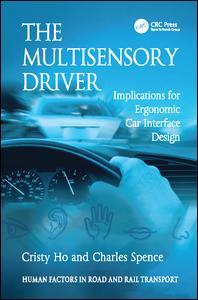The Multisensory Driver Implications for Ergonomic Car Interface Design Human Factors in Road and Rail Transport Series
Auteurs : Ho Cristy, Spence Charles

Date de parution : 03-2017
15.6x23.4 cm
Disponible chez l'éditeur (délai d'approvisionnement : 14 jours).
Prix indicatif 66,20 €
Ajouter au panierDate de parution : 09-2008
15.6x23.4 cm
Thèmes de The Multisensory Driver :
Mots-clés :
Auditory Warning Signal; auditory; Vibrotactile Cues; warning; Spatial Cuing Effect; Car Horn Sounds; spatial; Driving Simulator; attention; Spatial Auditory Cues; vibrotactile; RSVP Task; cues; High Fidelity Driving Simulators; Vibrotactile Stimuli; Driver’s Visual Attention; driving; White Noise Bursts; Spatial Attention; Real Driving Situation; Auditory Icons; Peripersonal Space; Hands Free Mobile Phone; Attentional Facilitation; Real World Driving; Auditory Cues; Auditory Secondary Task; Hands Free Phone; Endogenous Orienting; Peppermint Odour; Participant’s Waist; Dual Task Decrement



